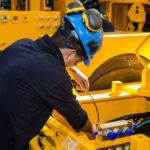
As a seasoned blogger, I’ve delved into the realm of benefits of 3d printing and uncovered a treasure trove of benefits that this innovative technology offers. From revolutionizing manufacturing processes to enabling rapid prototyping, benefits of 3d printing has transformed various industries. Its ability to bring digital designs to life with speed and precision is truly remarkable.
In this article, I’ll explore the myriad advantages of benefits of 3d printing, shedding light on how this cutting-edge technology is reshaping the way we create and produce objects. Whether it’s reducing production costs, customizing products, or fostering creativity,benefits of 3d printing has opened up a world of possibilities for businesses and individuals alike. Join me on this journey as we unravel the transformative power of benefits of 3d printing and discover how it’s shaping the future of design and manufacturing.
Benefits of 3D Printing
Rapid Prototyping
Benefits of 3d printing revolutionizes the manufacturing industry by speeding up prototyping processes. It allows me to quickly create functional prototypes, reducing lead times significantly. With traditional methods, prototyping could take weeks or even months, but with 3D printing, I can produce prototypes in a matter of days. This swift iteration process enables me to test designs more efficiently, leading to faster product development cycles.
Cost Efficiency
In the manufacturing industry, cost efficiency is paramount, and benefits of 3d printing excels in this area. It’s a cost-effective manufacturing method as I can produce complex parts without the need for specialized tooling. This eliminates the high costs associated with traditional manufacturing processes such as injection molding. Additionally, I can optimize material usage by only printing what’s necessary, reducing waste and ultimately saving on production costs.
Customization Opportunities
One of the standout advantages of benefits of 3d printing in the manufacturing industry is the unlimited customization it offers. I can tailor products to meet specific customer needs, whether it’s adjusting sizes, shapes, or incorporating personalized elements. This level of customization not only enhances customer satisfaction but also allows me to create unique, one-of-a-kind products. With 3D printing, I have the flexibility to produce custom parts on-demand, catering to individual preferences and requirements.
Benefits in Healthcare Sector
Patient-Specific Solutions
In the healthcare sector, benefits of 3d printing offers unparalleled advantages with patient-specific solutions. It allows for the creation of customized medical devices tailored to individual patients’ needs. These personalized solutions include prosthetics, implants, and anatomical models. The technology enables healthcare providers to deliver precise and bespoke treatment options, enhancing patient outcomes and quality of life.
Surgical Planning and Training
Moreover, benefits of 3d printing plays a crucial role in surgical planning and training. Surgeons can utilize 3D-printed models of patients’ anatomy to perform intricate procedures with enhanced accuracy and efficiency. These models aid in visualizing complex structures, practicing surgeries, and developing innovative techniques. By incorporating 3D printing into surgical training, medical professionals can refine their skills, reduce risks during procedures, and improve overall patient care.
Environmental Impact
Exploring the realm of benefits of 3d printing reveals not only its remarkable benefits for manufacturing, but also its significant environmental impact. This innovative technology has been instrumental in promoting sustainability across various industries. One key environmental benefit of 3D printing is the reduction of material waste. Unlike traditional manufacturing methods that often result in excess material being discarded, 3D printing utilizes only the necessary amount of raw materials, minimizing waste generation.
Another environmental advantage lies in the locality of production facilitated by benefits of 3d printing. By enabling on-demand manufacturing closer to the point of consumption, this technology reduces the need for extensive transport of goods, thereby lowering carbon emissions associated with long-distance shipping. Moreover, 3D printing contributes to energy conservation. Traditional manufacturing processes can be energy-intensive, whereas additive manufacturing, the technique behind benefits of 3d printing, consumes less energy, making it a more efficient and eco-friendly production method.









